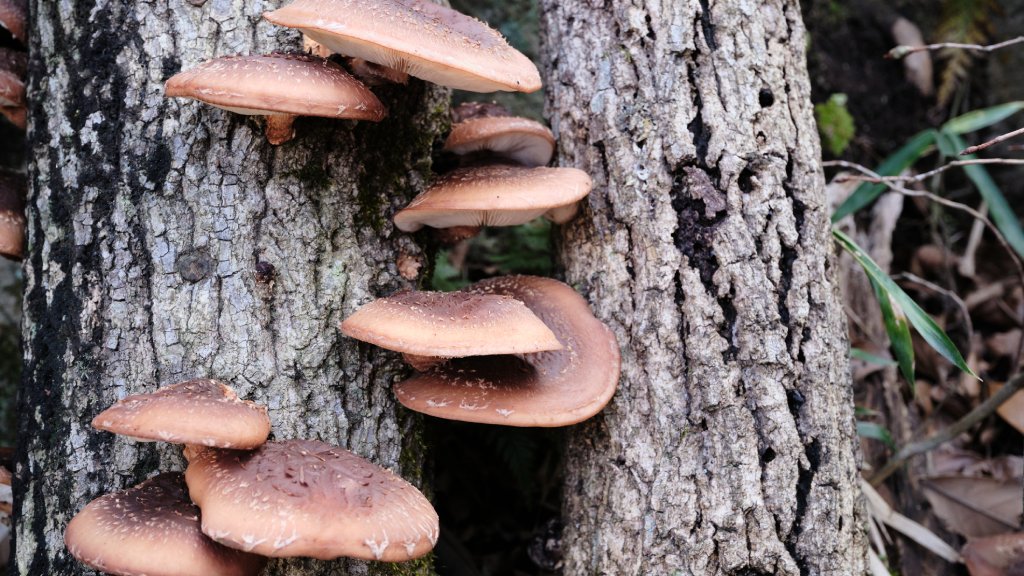Which Types Of Wood To Use For Growing Fungi
Wondering about the best logs for mushroom plugs? Match the mushroom type to the tree variety for a great crop of delicious mushrooms.


Growing your own mushrooms on logs is a way to enjoy the freshest varieties, but what are the best logs for mushroom plugs? Logs for mushroom growing may be purchased pre-sown and ready to grow. You can purchase a kit and grow mushrooms from spawn that’s inoculated on a substrate, or you can make your own. But, be aware that not all mushrooms grow on logs.
Mushrooms lovers know that mushrooms work well in a variety of dishes and give a meaty, umami flavor to vegetarian dishes.
Mushrooms That Grow on Logs
The best varieties to try to grow on logs are Shitake, Lion’s Mane, Comb Tooth, Olive Osterline, Reishi, Chestnut, Nameko, and a few more. Some mushroom varieties are more commonly grown on substrates such as sawdust or straw.
Certain log-growing varieties actually prefer certain kinds of wood. It is important to know which wood the variety thrives upon for the best crop. Some mushrooms that are inoculated onto logs will produce for years, such as Shitake. The best logs for mushroom plugs are species-specific in most cases.
Best Logs for Growing Mushrooms
In general, most edible mushrooms grow on deciduous, hardwood trees. Poplars and other softwoods will grow faster and produce mushrooms earlier, but they don’t yield much. Woods like oak and hard maples are most often the best logs for growing mushrooms. But Pearl Oysters like maple, while Phoenix Oyster prefers spruce. Each variety will have a perfect wood that will be most compatible with the spawn.
Selecting Logs for Mushroom Growing
Once you know the type of mushroom you will be growing, selecting the wood is crucial. Each type of spawn will produce the best on its chosen wood type.
- Shitake - Alder, beech, ironwood, hornbeam, hard maple, oak, sweet gum
- Oyster - Aspen, box elder, hackberry, mulberry, tulip, yellow poplar, cottonwood, willow
- Lion’s Mane and Comb tooth - Beech, hornbeam, hard maple, mulberry, hackberry
- Nameko - Aspen, box elder, cottonwood, willow, buckeye, ironwood, hornbeam, hard maple, sweet gum
- Olive Osterling - Beech, hard maple, oak
- Maitake - Oak, sweet gum
- Reishi - Hard maple, sweet gum
- Chicken of the Woods - Oak
- Brick Cap - Oak
- Chestnut - Black or paper birch, hard maple, sweet gum
- Turkey Tail - Hard maple, oak
Frequently Asked Questions
When Do I Cut Logs for Mushrooms?
Timing is important when cutting a log for growing mushrooms. Healthy trees with no signs of pest or disease should be used. Cut them when the tree is dormant. In deciduous trees, this is when the leaves have fallen. The log needs to die out a bit before using it. Let it rest for 2 weeks, on the ground but out of dirt and leaves and where it will be away from direct sun and wind. Winter and fall are the best times to harvest your logs.
What Time of Year Do You Inoculate Mushroom Logs?
Logs can rest longer than 2 weeks but it can lead to excessive drying out and the possibility of contamination. That means the best time to inoculate is 2 weeks after harvesting the log.
Can You Inoculate Live Trees With Mushroom Plugs?
Technically you can inoculate a live tree, but research has shown low yields. The process will also probably kill the tree. Most mushrooms prefer to grow on dead logs and those that have begun to decay. If a live tree has mushroom plugs introduced, the plant material will break down and the tree will decline and die.
Sign up for the Gardening Know How newsletter today and receive a free copy of our e-book "How to Grow Delicious Tomatoes".

Bonnie Grant is a professional landscaper with a Certification in Urban Gardening. She has been gardening and writing for 15 years. A former professional chef, she has a passion for edible landscaping.